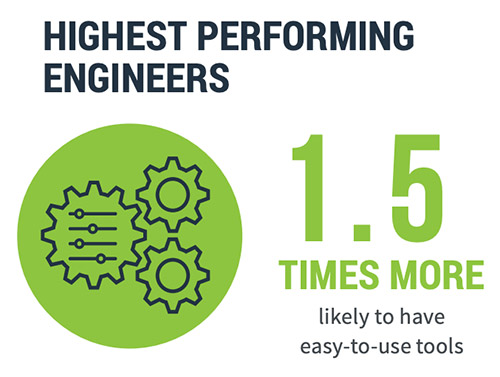The use of open source software in DevOps has become strategic for organizations of all sizes
A higher percentage of top performing teams in enterprise organizations are using open source software, according to a survey conducted by DevOps Research and Assessment (DORA) and Google Cloud. Additionally, the proportion of Elite performers (highest performing teams) nearly tripled from last year, showing that DevOps capabilities are driving performance.

These findings reflect organizations’ increased willingness to embrace investments in technology to deliver value and the use of open source – even in highly regulated, traditionally cautious industries such as financial services.
Openness provides vendors with a strong community for benefits like information sourcing, recruiting, and improved security, and since organizations get access to the source code with open source, they can freely customize software applications to fit their specific business requirements.
“Open source provides a jumpstart in developing applications and accelerating time to delivery. It also enables organizations to benefit from the innovation of a larger community, as well as contribute their own innovation back to the community. Everyone benefits,” said Sacha Labourey, CEO, CloudBees.
The 2019 Accelerate State of DevOps Report showed that elite and high performing teams report strong use of open source software. This echoes findings from earlier research, showing that elite performers were 1.75 times more likely to make extensive use of open source than low performers, and were 1.5 times more likely to plan to expand their use of open source software.
“The strongest concentration of fully proprietary software is seen in low performers, while the lowest concentration is seen in high performers,” said Dr. Nicole Forsgren, lead research scientist for the 2019 Accelerate State of DevOps Report. “Proprietary software may be valuable, but it comes at great cost to maintain and support. It’s no surprise that the highest performers have moved away from this model. Companies should be thoughtful about which software provides strategic value to organizations, and which is merely utility. By addressing their utility needs with COTS solutions and minimizing customization, high performers save their resources for strategic software development efforts.”
“Financial services organizations like ours see open source and the cloud as strategic opportunities to embrace, rather than a risk to shy away from,” said Dinesh Keswani, CTO, Shared Services, HSBC. “The use of open platforms for our DevOps teams enables us to innovate on new applications, especially in the banking retail space, and rearchitect legacy applications to be more agile in the cloud. Creating new services that can be deployed on demand and easily updated are less of a risk than maintaining monolithic applications that can’t be changed.”

“All companies are now software companies. In the race to out-innovate competitors they’ve put open source software at the core of their digital transformations as the only way to truly keep up in today’s world,” said Derek Weeks, VP and DevOps advocate at Sonatype. “But, open source doesn’t come without the need to consider quality across suppliers. As the need for open source in the enterprise grows, companies must understand what open source they’re using and where it is being used.”
“In an effort to address and overcome complexities, we are seeing a dramatic shift in the future of the modern application stack as companies look to multi-cloud and open source technologies, like Kubernetes,” said John Coyle, VP of business and corporate development, Sumo Logic. “Open source empowers our customers to scale and build at the rate they need, with the support of the community as opposed to a siloed approach that limits the growth that could be achieved otherwise.”